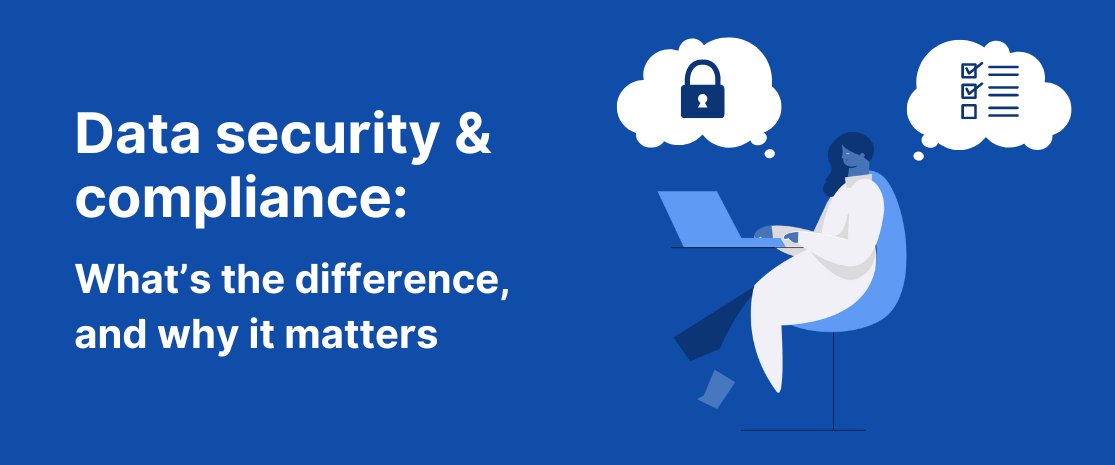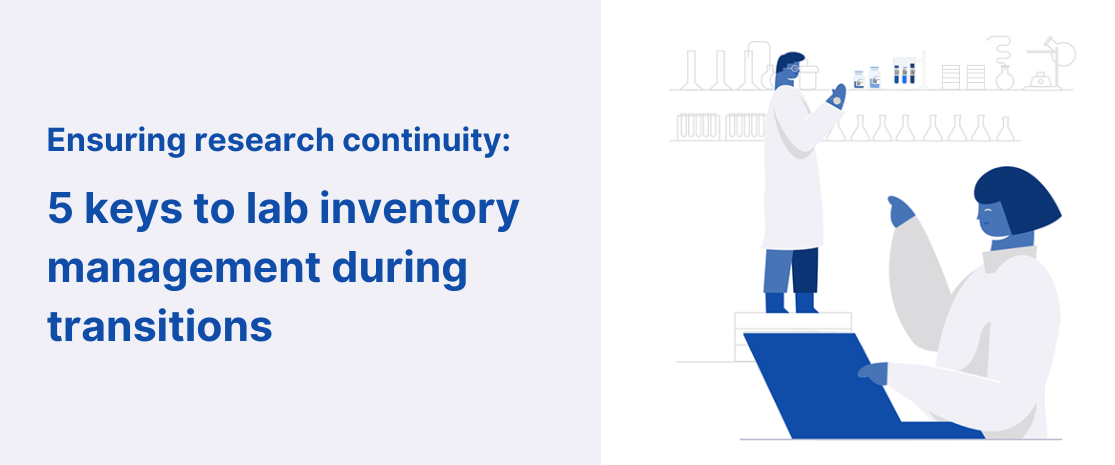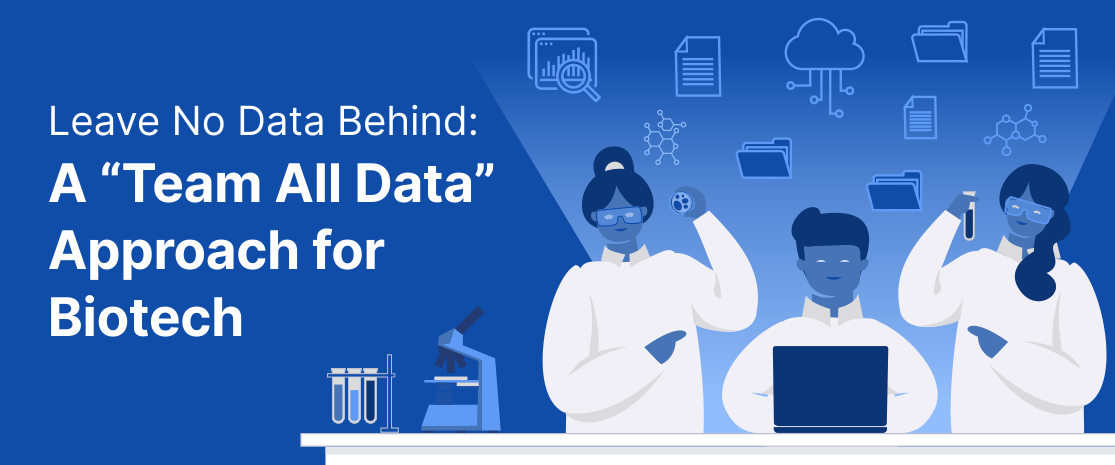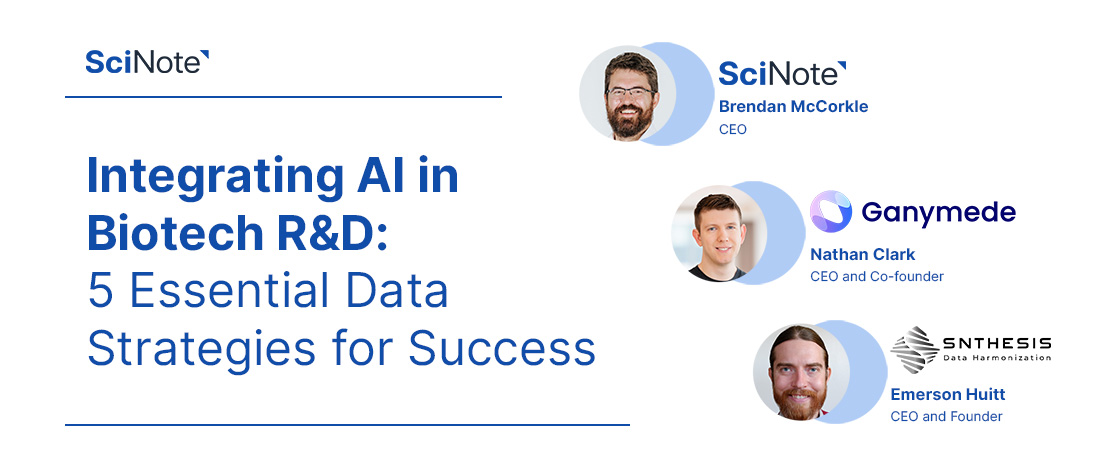Data Security & Compliance: What’s the Difference, and Why It Matters
Biotech’s growing dependence on digital technologies amplifies the need for stronger security measures, especially considering the sensitivity and value of its data. Though, a pattern is emerging where people are placing importance on “compliance certification,” often without gaining an understanding of what it means.
In this blog post, we’ll summarize a discussion on the importance of data security and protection and its impact on biotech from a recent webinar with SciNote’s CEO Brendan McCorkle, and Bhanu Jagasia and Kris Martel of bladestack.io, a leading cybersecurity and cloud services advisory firm. From adopting a proactive approach to pairing up with a cloud service offering, and taking on new technologies while keeping systems safe, we’ll touch upon strategies and measures that you and your organization should adopt for peak digital security.
Summary points
- Security goes beyond compliance. It’s important to understand that compliance alone isn’t sufficient for biotech data security. There is a need to delve deeper into security implementation beyond checklist compliance.
- Compliance is part of an ongoing process. Organizations should prioritize doing security right, and going beyond the compliance checkbox, to ensure their data is secure.
- The dynamic nature of cyber threats demands continuous monitoring and adaptation. Leveraging cloud-based services with dedicated security teams will enable organizations to focus on innovation while ensuring comprehensive data security.
‘Data Security’ in biotech: what it really means and why it matters
The biotech sector isn’t just another industry – it’s a powerhouse of innovation that touches our lives in many profound ways. This includes groundbreaking developments in the COVID-19 vaccine, advanced personalization of medicine, sustainable agriculture, and reshaping the overall global health landscape.
“They’re milestones that are changing the world, tackling some of the biggest challenges and safeguarding our planet.” said Kris Martel, Co-Founder of bladestack.io.
As biotech itself is such a goldmine of data and intellectual property, it unsurprisingly draws a lot of attention from cybercriminals. This means, by default, it’s in need of a lot of protection. The main issue isn’t just the need for security, but understanding what effective security involves.
What are the appropriate protective measures we need to put in place? Is on-premise or cloud storage a safer choice? Is choosing software with certain security certifications enough? Do these certifications require external audits or self-assessments?
These are the questions you need to ask and find answers to in order to understand whether your data is secure.
Being compliant doesn’t mean you’re secure
Cybersecurity frameworks in and of themselves seem straightforward. They typically present themselves as an array of requirements that you have to check off a list. For example, ISO and SOC2 are often technical requirements that are procedural or policy-driven and have to be set in place. However, true security implementation will take a real understanding of what has actually been implemented in the system.
Let’s take HIPPA compliance as an example. “The laws written about HIPAA were written before mobile devices were really adopted,” said SciNote’s CEO Brendan McCorkle.
“But the companies that are being held to this standard, are more and more frequently app-first or app-forward health IT, digital health, connected health companies. And so three quarters or more of their footprint is mobile. So they are being held to this checklist of items that were written without the idea of mobile even in the Statesmen’s minds when they wrote the laws.“
This example shows that compliance alone isn’t a sufficient indicator for security. Instead, organizations should prioritize doing security right, and going beyond the compliance checkbox, to ensure their data is secure.
Compliance is part of an ongoing process; implementation matters
As a strong security infrastructure is the first line of defense, it should be followed by a range of practical and well-executed compliance strategies to ensure protection.
Here is an example. Many certifications require features such as Multi-Factor Authentication (MFA) exist within the security framework, each with nuances that should be considered. On a surface level, MFA might sound simple – it adds a layer of security by verifying the user’s identity with multiple forms of proof.
But is using MFA when logging into a VPN enough? Or does every interaction with our services require stringent MFA application? Satisfying compliance requirements without understanding these details leads to a superficial safety blanket rather than real protection.
That’s why the role of implementation should be the core focus of every biotech security network. A thoroughly planned and executed implementation of security measures creates that tough barrier. Along with a full understanding of when, where, and why these protocols are necessary, companies can design a much better security infrastructure.
Evolving security threats require continuous monitoring
Humans are prone to making mistakes. While compliance protocols can be defined and programmed to a certain extent, the unpredictability of human behavior means security measures must be prioritized to safeguard data.
As touched upon previously, cybersecurity frameworks are complex – with a higher standard of security comes a higher bar of entry. Those who aren’t as security-savvy may see compliance as safety, while human hackers are evolving their techniques and finding new means to breach security systems.
“The criminals, the hackers, the evil do-ers out there – for every way you can think of to lock and secure your system down, they’re coming up with 10 different ideas of how you’d never thought they could possibly pick on your security,” said Martel.
On this, a common misconception is that an on-premises system offers better security than a cloud-based one.
It’s necessary to recognize that cloud-based companies have dedicated teams of experts who constantly monitor, update, and reinforce the security infrastructure, ensuring their systems are guarded against the ever-evolving landscape of cyber threats. The chance of cloud-based companies addressing exploits and patching up systems quickly is much, much higher than an individual IT personnel handling various IT demands while dealing with security threats and patches.
Leveraging cloud-based services means that you can focus on innovation without the constant worry of data breaches or security lapses. It’s also why it’s important to have a cloud service offering with a high level of security and defense in depth.
User experience is important, too
It is understandable that researchers and key players in the biotech world want to focus on their core roles. They’re immersed in exploring scientific breakthroughs and advancing healthcare, which typically doesn’t include concerns about security protocols and compliance requirements. So, the goal is to implement effective security measures that protect valuable data while also making sure that these protective layers don’t affect productivity.
“This is the balance that I think a lot of people are trying to strike – how can we have the presence of the same level of security, without that level of frustration,” said McCorkle.
Pay attention to AI as it advances
With LLMs (large language models) and AI continuing to progress so quickly, we’re starting to see them being increasingly integrated into business operations. These AI systems bring about a host of benefits but also introduce new security challenges. Rather than reject these technologies due to potential rigid compliance measures, businesses should aim to embrace them, understand them, and build robust security measures first.
AI adoption is infiltrating all industries, which means AI ethics are becoming a hot topic – developing ethical guidelines and security protocols to make sure these systems are transparent and don’t unconsciously introduce any new vulnerabilities.
Security first, compliance second
“It’s more common for organizations to only get serious about data protection only following a breach,” added Jagasia. “It’s a reactive approach that unfortunately is a tale old as time.”
Rather than just checking off compliance boxes, focus on developing a responsive defense by considering the following:
- The reasons behind compliance requirements
- The changing landscape of digital security threats
- Human behavior and user experience
- Implementation and execution in real-world scenarios
- Choosing service providers that go beyond compliance and have certification that require external audit instead of self-audit or assessment.
About bladestack.io
bladestack.io is a leader in the field of compliance, having established itself as a trusted partner for organizations like SciNote, who are looking to get to the highest levels of compliance and security for their business.
Although their expertise lies in a versatile approach to diverse compliance needs, with FedRAMP being their primary domain, they tackle issues related to the National Institute of Standards and Technology (NIST) and a broad spectrum of compliance-related activities.
Backed by their team of elite cloud security experts, they engineer creative, compliant solutions to cloud security issues for emerging startups, all the way up to large corporations.





